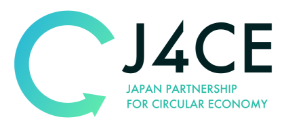Download: J4CE Noteworthy Cases/Initiatives 2024
Download: J4CE Noteworthy Cases/Initiatives 2022
Download: J4CE Noteworthy Cases/Initiatives 2021
Search for cases
* Multiple conditions can be specified
SEARCH
SUBCATEGORY
* Click here for examples of initiatives by each company.

Switching from fossil resource-derived packaging materials to paper packaging materials for A3 MFP
RICOH Company, Ltd.
Until now, expanded polystyrene (EPS), a material derived from fossil fuels, has generally been used as packaging for transporting MFP products. The Ricoh Group is working to switch from EPS to recyclable paper packaging.
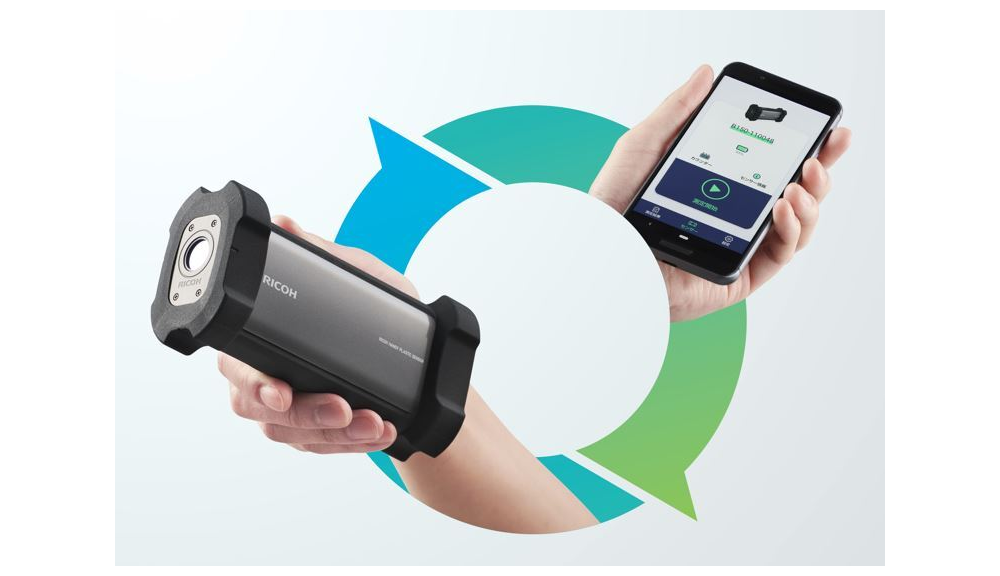
Recycling initiative using a Handy plastic sensor
RICOH Company, Ltd.
The B150 is a handy sensor that uses near-infrared spectroscopy to distinguish resins.
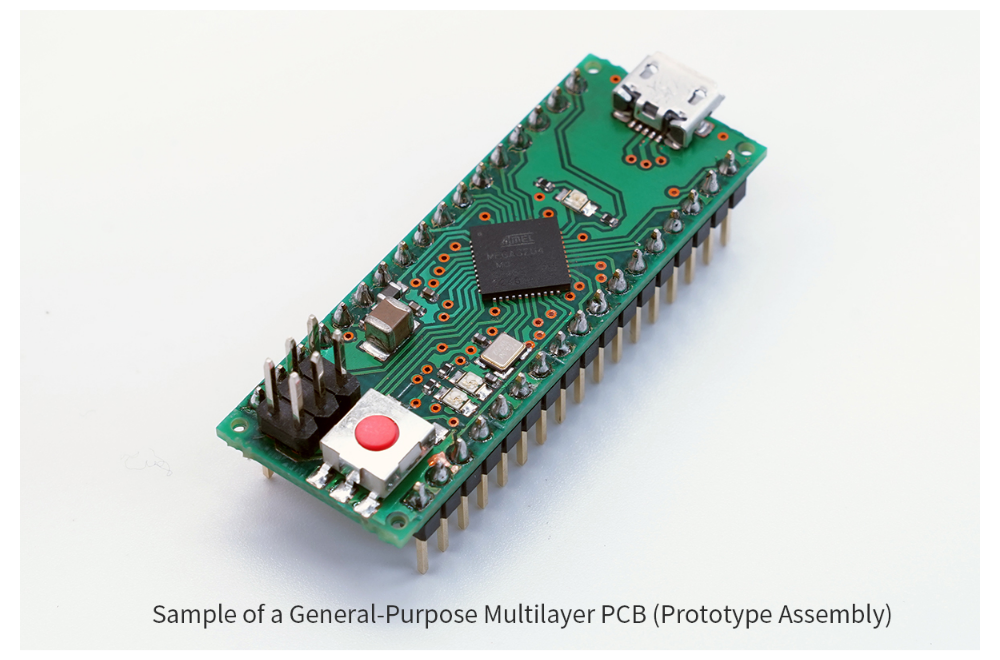
Elephantech Unveils General-Purpose Multilayer PCBs With SustainaCircuits™ Technology
Elephantech Inc.
Elephantech has been mass-producing SustainaCircuits™, innovative printed circuit boards (PCBs) that reduce copper usage by 70-80% using printing technology.

Powering Sustainability through Collaborative Design
STMICROELECTRONICS K.K.
STMICROELECTRONICS, ELEPHANTECH Collaboration on reducing the carbon footprint (PCF) of a working solution for industrial sustainability.
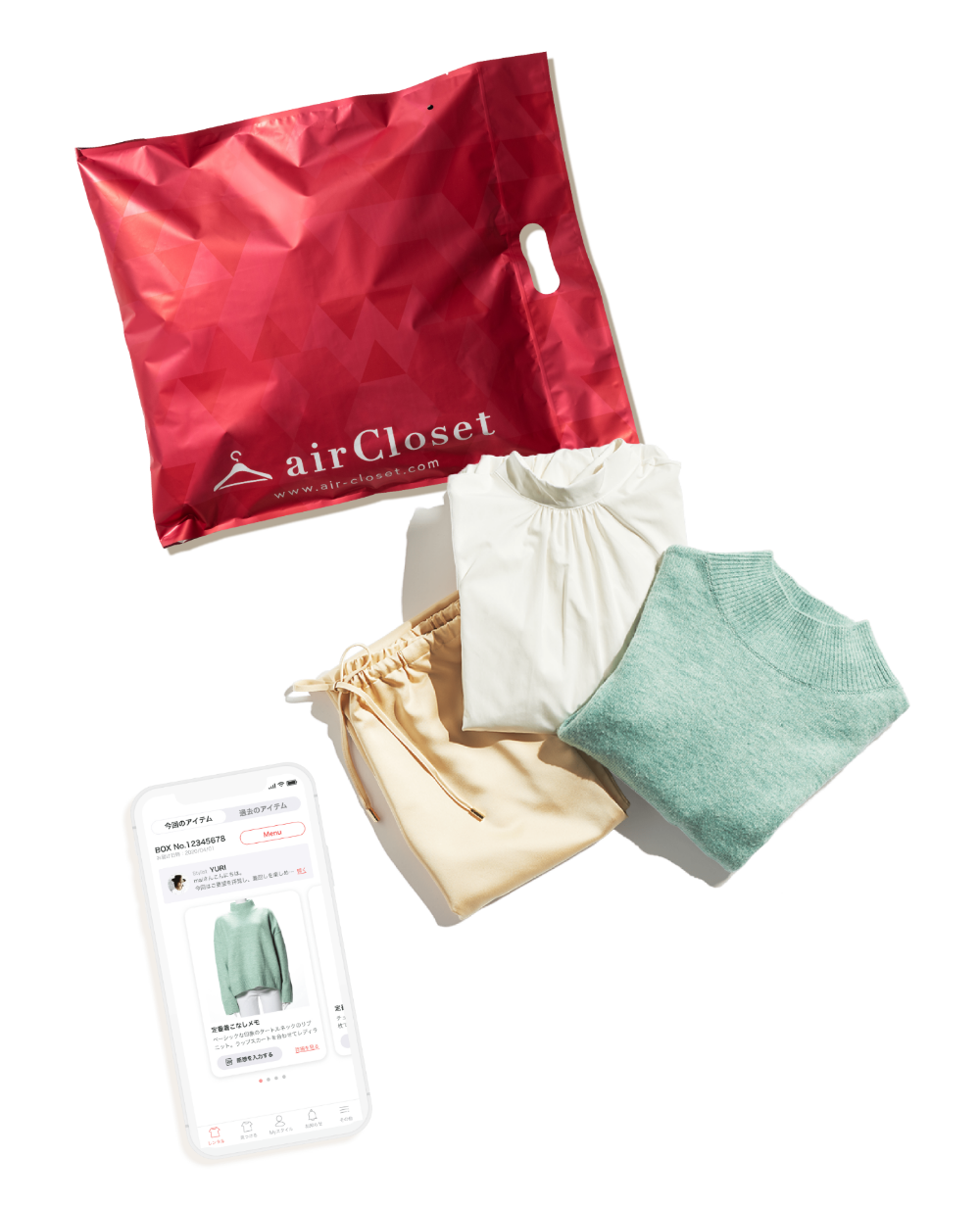
Fashion sharing service for everyday clothes to decarbonize and reduce clothing waste
airCloset, Inc.
airCloset offers a subscription-based service that allows customers to rent and enjoy outfits coordinated by professional stylists based on their body type, preferences, and intended usage. The service is accessible nationwide in Japan with a simple online registration. Customers can enjoy the delivered clothing, return it, and receive their next set of outfits within a few days.

Acceleration of recycling waste plastics from small household appliances: Establishing large-scale collection routes and an integrated resource circulation process through advanced sorting technologies
Mitsubishi Electric Corporation Future Ecology Co., Ltd. BIC CAMERA Inc. Veolia Japan GK digglue.Inc
Currently, the recycling of used small electronic devices aims to sort and recover metals with high resource value, such as iron, aluminum, and copper. As a result, the recycling rate of waste plastics from small household appliance is lower compared to the waste plastics recovered from the four items specified by the Household Appliance Recycling Law (refrigerators, air conditioners, washing machines, and televisions). Approximately 80% of these waste plastics are processed through thermal recycling, which reuses the heat generated from combustion as energy.
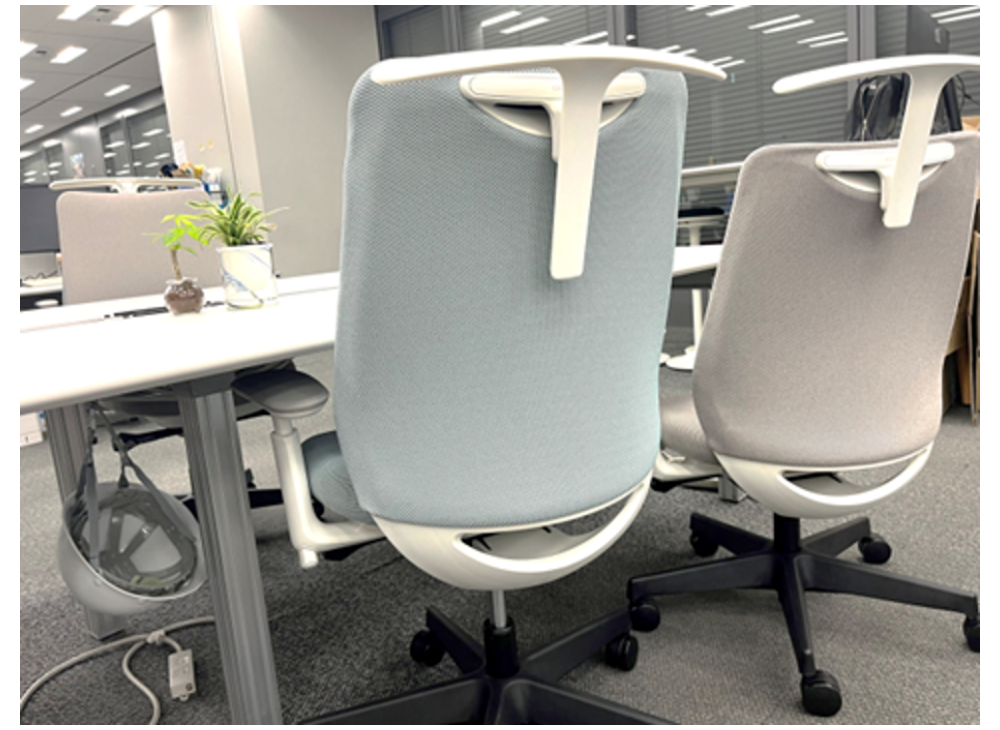
Efforts to Reduce Plastic Emissions and Promote Recycling in Business Activities
MEIJI YASUDA LIFE INSURANCE COMPANY
・Introduce office chairs that offset all GHG emissions throughout their lifecycle (from raw material procurement to production, distribution, sales, and disposal after use). ・Contribute to effective resource use and waste reduction by introducing office chairs made of recycled resin legs from collected used products and upholstery made from recycled waste fabric and domestic used fishing nets. ・Switch plastic files used in business activities to LIMEX material or paper files to reduce the use of plastic products.
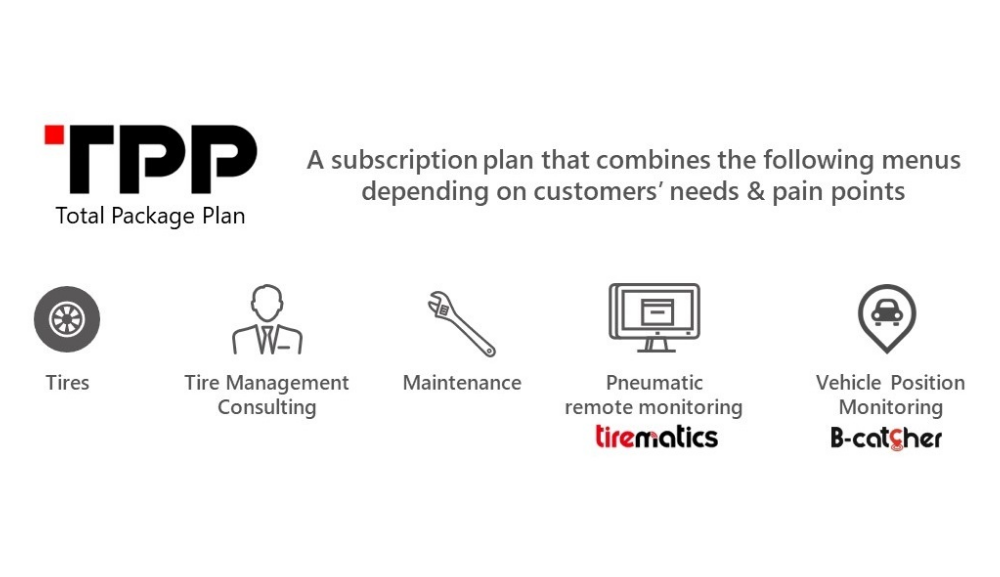
Contributing to the Effective Use of Resources through Remote Tire Pressure Monitoring Services
Bridgestone Corporation TRANSTRON Inc. Yazaki Energy System Corporation
- Bridgestone / Bridgestone Tire Solution Japan Co., Ltd. (hereinafter referred to as "Bridgestone"): Planning, development, and provision of tire related solution services which consist of tire supply, tire maintenance, remote tire pressure monitoring, etc.
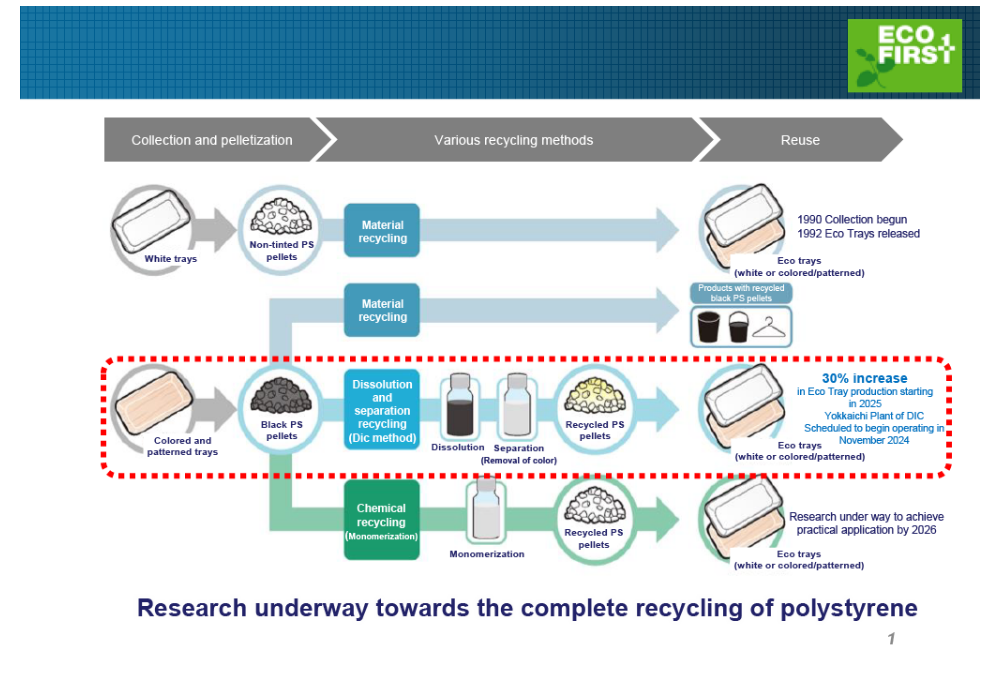
Collaboration using the world's first new dissolution and separation recycling technology for the complete recycling of polystyrene.
FP Corporation DIC Corporation
In November 2020, DIC and FPCO announced plans to collaborate in the practical implementation of a closed-loop recycling system for polystyrene that maximizes the technologies, as well as the collection and recycling systems, of both companies. In this initiative, colored foamed trays will be recycled into new trays just like conventional white trays using a new dissolution and separation recycling technology, enabling a "tray-to-tray" recycling. Additionally, this effort aims to realize the closed-loop recycling that uses chemical recycling technology to recycle polystyrene to styrene monomer, which is the raw material for polystyrene.
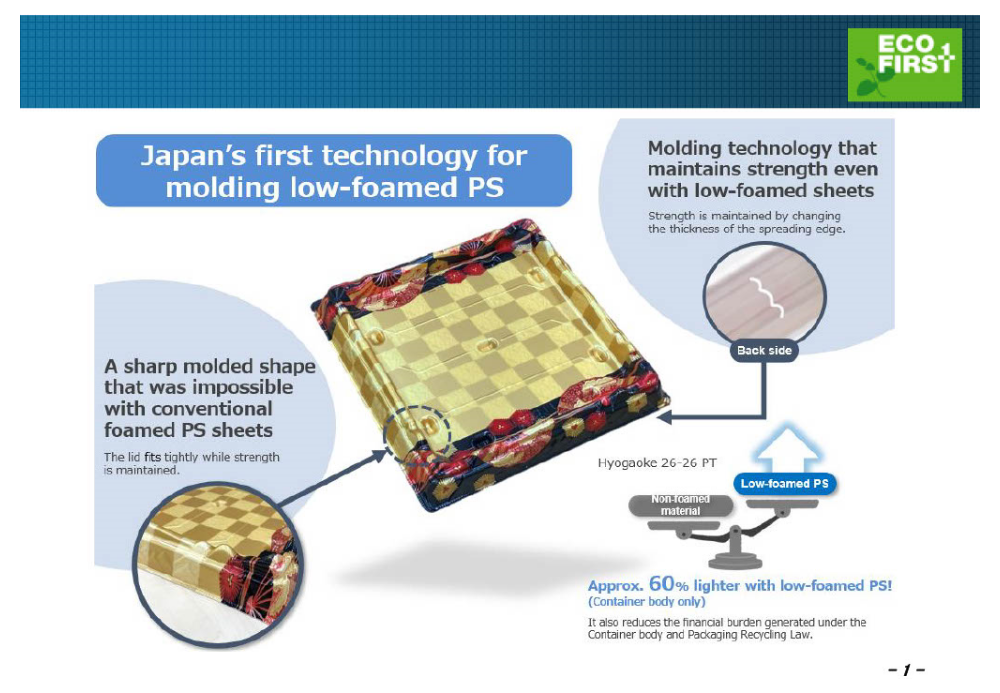
Low-foamed PS containers created by Low-foamed PS sheet and New molding technology.
FP Corporation Sekisui Kasei Co., Ltd.
In response to our customers' needs to further reduce the use of plastic in the market, FPCO has been conducting research on product weight reduction utilizing PSP (polystyrene paper) foaming technology in collaboration with SEKISUI KASEI CO., LTD(SEKISUI KASEI).
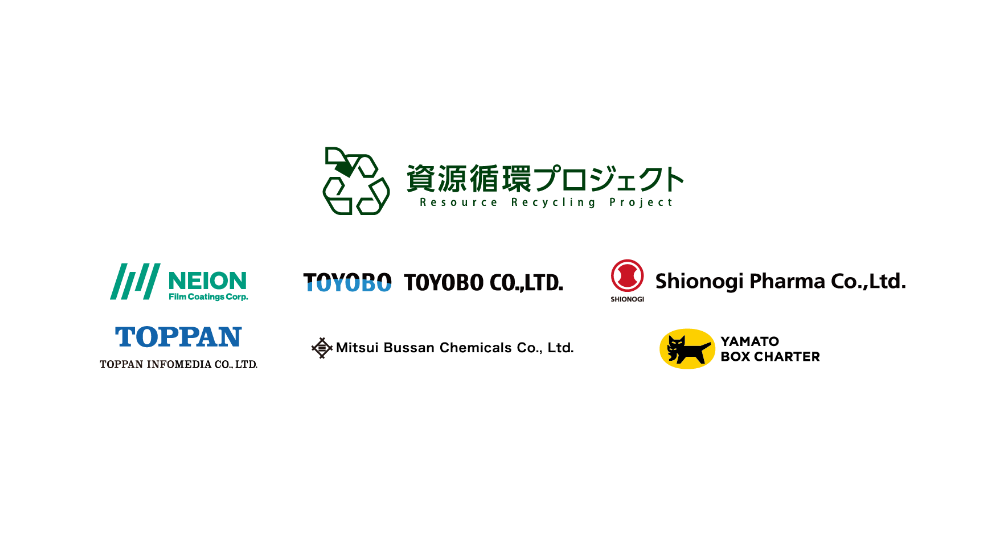
closed recycling system of label backing release liner" Resource Recycling Project"
Resource Recycling Project NEION Film Coatings Corp. TOYOBO CO., LTD. Shionogi Pharma Co., Ltd.
label backing release liner typically uses composite materials of paper and resin, which are generally difficult to recycle. As a result, they become a large amount of industrial waste and are incinerated. In this project, we replace these label backing release liner with release liner for recycling made from PET-based synthetic paper. After use, the release paper is collected as valuable materials and subjected to material recycling. By using the recycled material again as a raw material for release liner for recycling, we achieve Film-to-Film recycling. This will enable the social implementation of closed recycling system of label backing release liner.

Eliminate Polystyrene Foam Packaging for Large TVs Using enviromentally concious biodegradable biopolymer
Sony Group Corporation
Sony has been transitioning from plastic packaging to paper packaging for small products. For larger and heavier products like TVs, polystyrene foam has remained the primary cushioning material due to it robust resistance during transportation.
